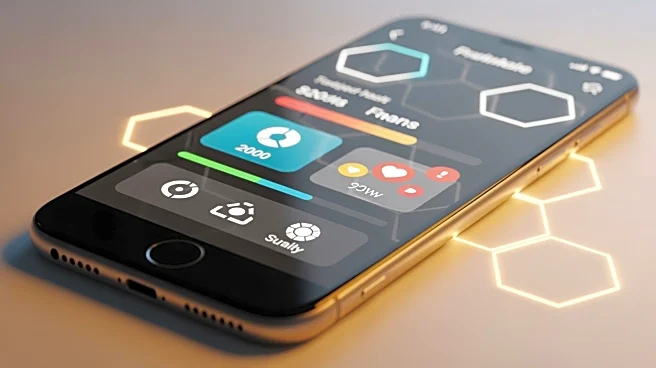What's Happening?
A recent study published in PLOS One has identified a correlation between smartphone use in bathrooms and an increased risk of hemorrhoids. Conducted by Dr. Trisha Pasricha and colleagues at the Beth Israel
Deaconess Medical Center’s Institute for Gut-Brain Research, the study surveyed 125 adults undergoing routine colonoscopies. It found that 66% of participants admitted to using their phones in the bathroom, primarily for news and social media. Those who used their phones were 46% more likely to have hemorrhoids, even after accounting for other risk factors such as diet and exercise. The study highlights the potential health risks associated with prolonged sitting on the toilet, exacerbated by smartphone use, which can lead to pelvic floor dysfunction and other complications.
Why It's Important?
The findings of this study underscore the broader implications of smartphone use on public health, particularly concerning habits that may lead to medical issues. Hemorrhoids, while not life-threatening, can cause discomfort and lead to significant healthcare visits, impacting both individuals and the healthcare system. The study suggests that younger adults, who are more likely to use smartphones in bathrooms, may face increased health risks. This could lead to a rise in healthcare costs and a need for increased medical attention for conditions related to prolonged bathroom use. The study also raises awareness about the hygiene concerns associated with bringing smartphones into bathrooms, potentially influencing public behavior and health practices.
What's Next?
Healthcare professionals may begin to advise patients against using smartphones in bathrooms, promoting awareness of the associated risks. Public health campaigns could emerge to educate the public on the importance of limiting time spent on the toilet and maintaining proper hygiene. Further research may be conducted to explore the long-term effects of smartphone use on bathroom habits and related health issues. Additionally, technology developers might consider designing features that discourage prolonged use in settings like bathrooms.
Beyond the Headlines
The study opens discussions on the cultural and behavioral shifts driven by technology, particularly how smartphones have changed daily routines and health practices. It highlights the need for a balance between technology use and health, encouraging individuals to be mindful of their habits. The findings may also prompt ethical considerations regarding the design of technology that encourages prolonged use, potentially leading to health issues.











